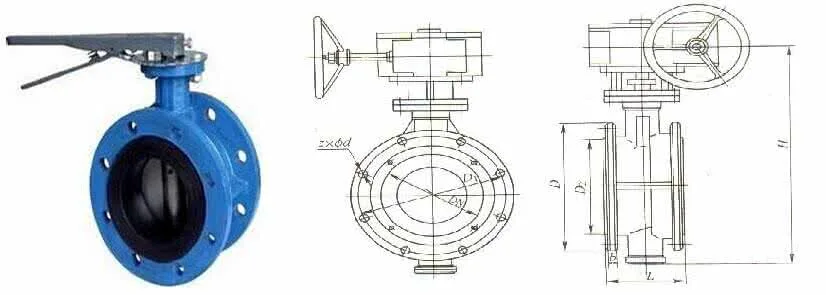2.
Process conditions
We must fully understand the process conditions of butterfly valves' process systems before we design
butterfly valves, and the process conditions include media's types (gases, liquid, solid phase and two-phase, multiphase mixture, etc.), medium temperatures, medium pressure, medium flow rates (or flows), power sources and parameters.
(1)
Media's types
Butterfly valves' structures are usually designed based on the major media, but we must also take into account the secondary media, such as media used for cleaning, testing and purging; media's adhesion and deposits will have impacts on structural designs of
butterfly valves; meanwhile we also need to pay attention to influences of media's corrosivity on the structures and materials.
(2)
Media's temperatures
Media's temperatures may cause the following problems.
①
Different thermal expansion
Different temperature gradients or expansion coefficients will cause uneven expansion of butterfly valves' sealed auxiliaries, which will make
butterfly valves stuck or leak when we open or close butterfly valves.
②
Changes in materials' properties
We should take into account reduction of materials' allowable stress at high temperatures when we design
butterfly valves; moreover, thermal cycles sometimes can cause size changes due to possible partial yields of expanded parts at extremely high temperatures.
③
Thermal stress and thermal shock
(3)
Media's pressure
Media's pressure mainly affect strength and stiffness designs of butterfly valves' pressure parts as well as designs of sealed auxiliaries' allowable working pressure and allowable operating pressure.
(4)
Media' flow rates
Media' flow rates mainly affect erosion resistance performance of the butterfly valves' channels and sealed auxiliaries’ surfaces. Especially for two-phase flow media such as gas-solid and liquid-solid media, we need to give more consideration.
(5)
Power sources
Power sources can directly affect butterfly valves' connecting interface designs, opening & closing time as well as sensitivity & reliability of drives. The power supply's voltages and current intensity changes don't have great influences on
valves, but pressure and flows of air sources and hydraulic power will directly affect butterfly valves' functions.
3.
Considerations of strength and stiffness
Besides static design calculations provided by
The Valve Design Manual, we also need to consider dynamic loads which are generated by the media's pressure and flow rates; especially for energy of water hammers which is formed when
butterfly valves are closed in medium and high pressure piping systems; moreover, we need to take account of additional loads due to environmental impacts and additional loads which are caused by pipes and bearings.
